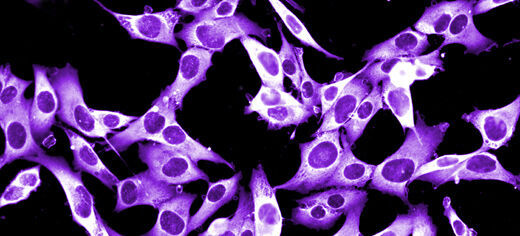
University of Leeds experts have uncovered further evidence that protective buffers at the ends of chromosomes - telomeres - are fundamental to the understanding of the deadliest form of skin cancer.
A team of international researchers, co-led by Dr Mark Iles from the University’s School of Medicine and St James’s University Hospital in Leeds, has uncovered five new common genetic risk factors for melanoma. They have also confirmed two others previously suspected to be risk factors.
Dr Iles said: “This research establishes further the important role that telomeres, which prevent damage to the ends of chromosomes and stop them from fusing together, play in the development of melanoma.
“A previous study last year established the importance of telomeres in melanoma – this research builds on that evidence.”
Working with colleagues from the QIMR Berghofer Medical Research Institute in Brisbane and others worldwide, Dr Iles and his team collected data from 11 studies of 15,990 melanoma patients and 26,409 healthy volunteers.
In addition to the role of telomeres, the researchers also found more evidence that skin pigmentation is a key genetic determinant of melanoma.
Dr Iles added: “We now know of 20 common genetic risk factors and 12 of these are clearly related to either telomere length, pigmentation or the number of moles an individual has. These last two factors are particularly important, because they are long-established as indicators of risk for melanoma. This reinforces the message that anyone with pale skin and many moles should take extra care when in the sun.”
There was also evidence that genes involved in the repair of DNA had a role to play in the development of melanoma.
Malignant melanoma is the fifth most common cancer in the UK with some 12,800 new cases and about 2,200 deaths each year.*
Dr Matthew Law, from QIMR Berghofer, said the international collaboration is now preparing for an even larger study which is expected to find more markers of risk.
“At the same time we need to start working out how these genetic variations work, in the hope we will find a gene that is a drug target to improve treatment for patients,” Dr Law said.
Dr Kat Arney, science information manager at Cancer Research UK, said: “Each person’s chances of developing cancer are due to a complex interplay between genes, lifestyle and environment. Research like this is vital for teasing out the role of each of these factors.
“It’s a good idea for everyone to enjoy the sun safely because most skin cancers are linked to too much UV from the sun or sunbeds. We all need some sun for healthy bones but when the sun is strong, spend time in the shade, cover up with clothing and a wide-brimmed hat, and use sunscreen for the parts you can’t cover with clothes.”
The research was funded by Cancer Research UK and the US Institutes of Health and published in the journal Nature Genetics.
Further information
Dr Mark Iles is available for interview. Contact Ben Jones in the University of Leeds press office on 0113 343 4031 or email B.P.Jones@leeds.ac.uk
A copy of the paper, “Genome-wide meta-analysis identifies five new susceptibility loci for cutaneous malignant melanoma”, by Law et al, is available from the Press Office.
*Source: Cancer Research UK